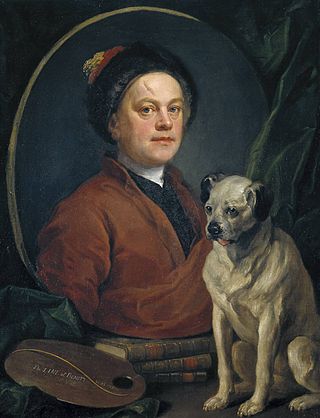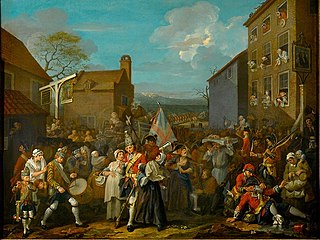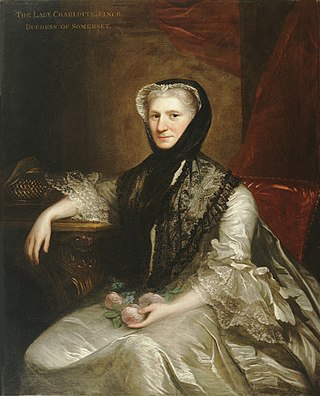
William Hogarth was an English painter, engraver, pictorial satirist, social critic, editorial cartoonist and occasional writer on art. His work ranges from realistic portraiture to comic strip-like series of pictures called "modern moral subjects", and he is perhaps best known for his series A Harlot's Progress, A Rake's Progress and Marriage A-la-Mode. Knowledge of his work is so pervasive that satirical political illustrations in this style are often referred to as "Hogarthian".

The Thomas Coram Foundation for Children is a large children's charity in London which uses the working name Coram.

The Foundling Museum in Brunswick Square, London tells the story of the Foundling Hospital, Britain's first home for children at risk of abandonment. The museum houses the nationally important Foundling Hospital Collection as well as the Gerald Coke Handel Collection, an internationally important collection of material relating to Handel and his contemporaries. After a major building refurbishment the museum was reopened to the public in June 2004.

The Foundling Hospital was a children’s home in London, England, founded in 1739 by the philanthropic sea captain Thomas Coram. It was established for the "education and maintenance of exposed and deserted young children." The word "hospital" was used in a more general sense than it is in the 21st century, simply indicating the institution's "hospitality" to those less fortunate. Nevertheless, one of the top priorities of the committee at the Foundling Hospital was children's health, as they combated smallpox, fevers, consumption, dysentery and even infections from everyday activities like teething that drove up mortality rates and risked epidemics. With their energies focused on maintaining a disinfected environment, providing simple clothing and fare, the committee paid less attention to and spent less on developing children's education. As a result, financial problems would hound the institution for years to come, despite the growing "fashionableness" of charities like the hospital.

Captain Thomas Coram was an English sea captain and philanthropist who created the London Foundling Hospital in Lamb's Conduit Fields, Bloomsbury, to look after abandoned children on the streets of London. It is said to be the world's first incorporated charity.

Thomas Hudson (1701–1779) was an English portrait painter.

Sarah Lennox, Duchess of Richmond, was Lady of the Bedchamber to Queen Caroline from 1724 to 1737. She was the mother of the famous Lennox sisters.

Coram's Fields is a seven acre urban open space in the Kings Cross area of the London Borough of Camden. Adults are only permitted to enter if accompanied by children.

Ashlyns School is a mixed secondary school and sixth form located in Berkhamsted, Hertfordshire, England. The school was established in 1935 as the final location of the Foundling Hospital, a children's charity founded in London in 1739. The Berkhamsted building converted into a school in 1955. Ashlyns School is noted as an example of neo-Georgian architecture and is a Grade II listed building.

John Spencer was a British nobleman and politician who sat in the House of Commons from 1732 to 1746.
Robert William Sievier FRS was a notable British engraver, sculptor and later inventor of the 19th century.
Events from the year 1740 in art.
Events from the year 1740 in Great Britain.

The March of the Guards to Finchley, also known as The March to Finchley or The March of the Guards, is a 1750 oil-on-canvas painting by English artist William Hogarth, owned by and on display at the Foundling Museum. Hogarth was well known for his satirical works, and The March of the Guards to Finchley has been said to have given full scope to this sense of satire; it was described by Hogarth himself as "steeped in humour".
Balthazar or Balthasar Nebot, was a painter active in England between 1729 and 1765.

Taylor White was a British jurist, naturalist, and art collector. A Fellow of the Royal Society, he was the patron of several prominent wildlife and botanical artists including Peter Paillou, George Edwards, Benjamin Wilkes, and Georg Dionysius Ehret. He was also a founding governor of the Foundling Hospital in London and served as its treasurer for many years.
William Nutter was an English engraver and draughtsman.

The Foundling Hospital Anthem, also known by its longer title "Blessed are they that considereth the poor" [sic], is a choral anthem composed by George Frideric Handel in 1749. It was written for the Foundling Hospital in London and was first performed in the chapel there. Handel wrote two versions, one for choir only and one for choir and soloists. Composed 10 years before his death, it was Handel's last piece of English church music.

Charlotte Seymour, Duchess of Somerset, formerly Lady Charlotte Finch, was the second wife of Charles Seymour, 6th Duke of Somerset. Lady Charlotte was the first of twenty-one 'ladies of quality and distinction' who signed Thomas Coram's first petition, presented to King George II in 1735, calling for the establishment of the Foundling Hospital.

Frances, Baroness Byron, was the second daughter of William Berkeley, 4th Baron Berkeley of Stratton, and his wife Frances Temple. She was the third wife of William Byron, 4th Baron Byron and a great-grandmother of the poet Lord Byron.














